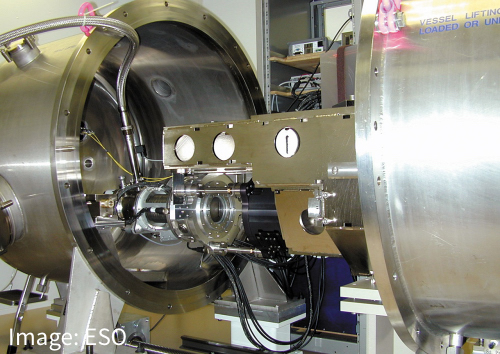Hunting for planets beyond the Solar System
People have long been fascinated by the possibility that there may be planets like ours in orbit around other stars, and by the idea that such a planet may host the conditions suitable for life to have evolved.

Until relatively recently, this was the stuff of science fiction. But the hunt for distant planets — exoplanets as they are known — has become a reality and is now a rapidly growing area of observational astronomy. Astronomers in the School of Physics and Astronomy (SPA) are at the forefront of this search, and in 2016 they reported the discovery of a planet — possibly with some Earth-like characteristics — in orbit around the nearest star to us, Proxima Centauri.
To find this planet, an international team of astronomers led by the SPA’s Dr Guillem Anglada Escudé employed a technique known as the radial velocity method. This involves observing the spectrum of light from a star and looking for regular changes in the wavelengths of characteristic features in the spectrum. These changes are caused by the Doppler effect and they indicate that the star is “wobbling” as the planet orbits around it.

This technique requires very high quality spectra, as the effect is very small — the star is moving at just a few metres per second — and so a highly specialised spectrograph was needed. This came in the form of HARPS, the High Accuracy Radial velocity Planet Searcher, a spectrograph dedicated to this kind of observation at the European Southern Observatory’s 3.6-metre telescope in Chile.
By gathering data over several months, and combining it with similar observations from other telescopes, the astronomers were able to determine that Proxima Centauri has at least one planet, now named Proxima b, with a mass of a little more than that of the Earth. It lies just inside the “habitable zone”, the doughnut-shaped region around the star within which the temperature could be suitable for liquid water to exist. And liquid water is a fundamental requirement of life as we know it.
And the hunt continues. Further observations of Proxima Centauri have been undertaken, to see if there is evidence for any more planets, alongside similar observations of two other nearby stars, Barnard’s Star and Ross 154. We will include those results here when they are published.
The original observing campaign that led to the discovery of Proxima b was communicated to the public in real time via an outreach project called Pale Red Dot; and the follow-up series of observations has been similarly exposed via a project called Red Dots. Both of these web-based outreach projects have allowed members of the public to follow the observations and the emerging results as they were obtained, a new approach to bringing astronomical research to everyone.